A coaching lesson: Geelong’s Chris Scott bit the bullet both at selection and on game day and the Cats looked a lot better for it. Photo: AFL MEDIA
RoCo’s Wrap: The boys of September are back in town
So eight became six, now down to four. And for the first time in four seasons, it’s the top four teams on the ladder who will end up playing off for two grand final spots.
If you’re a football purist, that should offer some satisfaction. You’d like to think the finals are a true representation of the five months of home and away football which have preceded them, and in performance terms, the 2017 preliminary finals will be.
As a reflection of the sort of football we’ve seen this year? Not so much. In fact, not at all. This season has been remarkable for its evenness and number of tight finishes. But the finals have been anything but tight.
The Port Adelaide-West Coast thriller aside, the margins have been convincing, to say the least, four games decided by 51 points or more. That’s blowout city.
There simply isn’t that big a gap in standard between the top and bottom halves of this year’s final eight. What it might mean, though, is that there’s a greater vulnerability about most sides now, not made of quite as stern stuff, and when the finals chips have been down, perhaps unable to muster enough resistance to avoid being put to the sword.
That could be said even of those teams left in the premiership hunt. Adelaide and Geelong finished level on points at the top of the ladder, but even they had a couple of shockers along the way, the Cats cleaned up as recently as the qualifying final. Ditto Richmond and Greater Western Sydney.
Thus even with the wheat seemingly now sorted from the chaff, you can’t back it in we’re suddenly going to have three thrillers to finish off the season appropriately. So what will we get?
Two semi-final winners who go into their preliminaries both underdogs but at least with confidence restored.
Indeed, there’s some symmetry about the fortunes of GWS and Geelong. Both have 1-1 records this season against next weekend’s opponents, and both were to some extent forced into makeovers through injury and looked more balanced and potent as a result.
By rights, Geelong’s loss of Cam Guthrie and then, pre-game, key defender Tom Lonergan, should have left the Cats even more vulnerable against Sydney. Against the midfield depth of the Swans particularly, Guthrie’s absence you might have thought would have ruled out a left-field move like Paddy Dangerfield as a key forward.
But coach Chris Scott bit the bullet both at selection and on the night. First, he swallowed his pride on the issue of Dan Menzel. Then, he refused to panic once Lonergan, Lance Franklin’s regular opponent, was ruled out, backing Harry Taylor to get the job done.
He stuck to his guns on Dangerfield, challenging Sam Menegola to lift in midfield after a poor qualifying final, the player responding in sensational fashion. He threw Mark Blicavs the job on Josh Kennedy and had a win bigger than he could have dreamed.
The more peripheral parts of the Geelong line-up did their jobs, too. Zach Guthrie looked far more composed than the hesitant kid he seemed in his first final, and Darcy Lang hasn’t played too many better games for the Cats than last Friday night.
Up forward, Geelong posted its second-highest score of the past six games without any real contribution from key forward Tom Hawkins. And a regular barometer for the Cats, Steven Motlop, picked a perfect time to come good , easily his best performance since early in the season.
Sure, the Cats are interstate at a venue at which they lost to Adelaide a couple of months back. But even that evening, despite seldom looking likely, Geelong still gave the Crows a few anxious moments late in the piece with Taylor cutting loose up forward. Adelaide Oval is also a venue at which they had won their previous three appearances.
Like Geelong, GWS looked in all sorts of trouble in a structural sense when the teams were announced, with key forward Jeremy Cameron and ruckman Shane Mumford, two keys to the Giants, both out of the picture.
Perversely, however, their absence in a sense might have done Leon Cameron’s team a favour. It was a completely different-looking Giants outfit that seized Saturday night’s semi-final against West Coast from late in the first term, and nowhere was the difference better reflected than it attack.
A forward set-up that had looked cumbersome and impotent against Adelaide with Cameron, Jonathon Patton and Rory Lobb near goal looked far more dangerous with Patton as the sole genuine marking target but two dangerous smaller forwards in Toby Greene and Steve Johnson at his feet, that pair finishing with nine goals between them in the Giants’ highest score since round 14.
Around the ball, we got a timely reminder of just how many midfield guns GWS possess. When they all fire, as against the Eagles, it’s more than a handful for any side to match up against.
Two in particular helped set the tone. Not for the first time, co-skipper Callan Ward led the way with some grunt work, picking up plenty of ball along the way. Tom Scully was equally significant early with his trademark hard running.
Neither are necessarily among the flashiest looking of the Giants, but their impact can’t be denied. And once Stephen Coniglio, Dylan Shiel, Josh Kelly and Lachie Whitfield got on board as well, the Eagles had no answers.
With that last quartet especially, the space afforded them is pivotal. West Coast offered way too much of it, and paid a huge price. That’s unlikely to be the case against Richmond, which plays tight and tough, kept the lid on the Giants’ runners brilliantly in the round 18 win, and but for a brain-fade at a fateful kick-in back in round nine, would going into Saturday with a 2-0 record this season.
Both Geelong and GWS clearly have their work cut-out, the Cats up against the team which has played the best football of the season and is intent on not blowing another golden September opportunity, the Giants facing undoubtedly the most one-sided MCG crowd finals football has seen.
But both have shown enough in week two to offer genuine hope that see something worth biting our nails over on Friday and Saturday. And after a string of September slaughters, that prospect is timely.


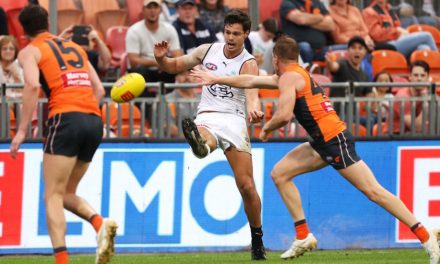
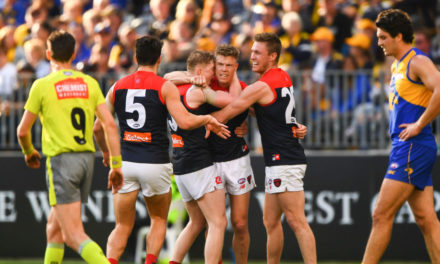
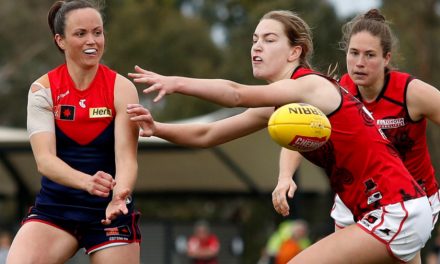
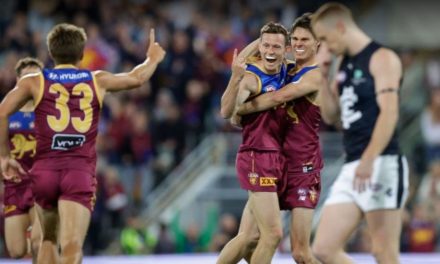

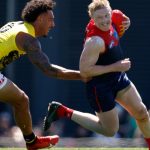


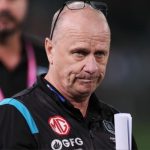

Footy illogic says one of these games at least will give the unexpected result.
Cats and Giants were both beaten in prelims last year and it’s not uncommon for teams to go one better the following year.
All four teams looked formidable at their last outing too.
The Giants I’d put the bigger question mark over, having played a West Coast team that played an extra 10 minutes of extremely intense footy the week before.
Cats reliance on Dangerfield is disturbing.
Would love to see Eddie doing his magic on the last Saturday.
Impossible to tip with any confidence.
Hi Rohan,
I’ve heard you say more than once that Adelaide have played the best football this year. I question that. I think if Geelong play at or very near to their best we can match them even if they are playing at or near their best. Am I being too optimistic?
I was impressed with Guthrie the Young, after having questioned the sanity of those who selected him. But he was not our worst played vs Richmond and was pretty good vs Swans. Not bad for an elevated rookie in his first year who weighs about 65 kgs wringing wet.